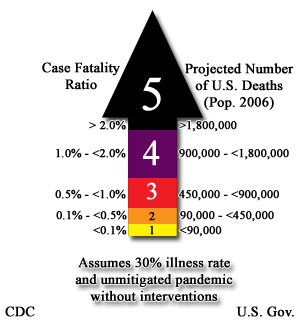Leifer
Senior Member.
So if the US "death rate" goes down, it will because of wider and more numerous testing (and reporting).... as more milder cases are found.
(This reply is time sensitive info, I won't update here.)
As of a few days ago.....estimated "total US citizens tested" is reported to be around 1,895 people....according to non-CDC sources.
CDC says 1583 total tests, a day earlier, on March 5th.....(if the reported data was correct and timely}
Honestly...this CDC data seems to be buried a bit :

https://www.cdc.gov/coronavirus/2019-ncov/cases-in-us.html
But isn't the protocol (in the last few days)...that if local tests reveal an infection, that it has to be also verified (checked twice) by the CDC ?
(This reply is time sensitive info, I won't update here.)
As of a few days ago.....estimated "total US citizens tested" is reported to be around 1,895 people....according to non-CDC sources.
Friday, March 6, 2020
https://www.theatlantic.com/health/...=twitter&utm_medium=social&utm_campaign=share
It’s one of the most urgent questions in the United States right now: How many people have actually been tested for the coronavirus?
This number would give a sense of how widespread the disease is, and how forceful a response to it the United States is mustering. But for days, the Centers for Disease Control and Prevention has refused to publish such a count, despite public anxiety and criticism from Congress.
........
But the number of tests performed across the country has fallen far short of those projections, despite extraordinarily high demand, The Atlantic has found.
.......
Through interviews with dozens of public-health officials and a survey of local data from across the country,
could only verify that 1,895 people have been tested for the coronavirus in the United States, about 10 percent of whom have tested positive.
.......
To arrive at our estimate, we contacted the public-health departments of all 50 states and the District of Columbia. We gathered data on websites, and we corresponded with dozens of state officials. All 50 states and D.C. have made some information available, though the quality and timeliness of the data varied widely. Some states have only committed to releasing their numbers once or three times a week. Most are focused on the number of confirmed cases; only a few have publicized the number of people they are capable of testing.
CDC says 1583 total tests, a day earlier, on March 5th.....(if the reported data was correct and timely}
Honestly...this CDC data seems to be buried a bit :
https://www.cdc.gov/coronavirus/2019-ncov/cases-in-us.html
But isn't the protocol (in the last few days)...that if local tests reveal an infection, that it has to be also verified (checked twice) by the CDC ?
Last edited:



